
Month: April 2016
Royal Northern College of Music: “Moscow, Cheryomushki” (Shostakovich)
One of my favorite Eastern European witticisms comes from Soviet-Era Poland:
Under Capitalism, Man exploits Man. Whereas under Socialism, the reverse is true.
Shostakovich’s 1959 operetta Moscow, Cheryomushki (yes, I know—I’ve been stuck on Shostakovich; one more after this, and I will move on) is about bureaucratic corruption and housing shortages in Moscow. “Cheryomushki” means a certain kind of cherry tree, and it refers to both a district of Moscow and to a specific 1950s housing project.
One might think that writing an operetta (one of Shostakovich’s longest works, in fact) ridiculing state officials as lecherous buffoons while decrying substandard housing might have meant that Shostakovich was taking his life in his hands.
However, people forget that between Stalin’s death and the shooting down of Francis Gary Powers’ U-2 CIA spy plane, there was a significant thaw in the Soviet Union. In the new climate of loosened restrictions, Shostakovich’s lyricists went to town with parody and sarcasm, while Shostakovich fashioned his own love letter to the Broadway musical comedy.
More, after the jump. Continue Reading →
Bob Ludwig on Shostakovich and Beethoven
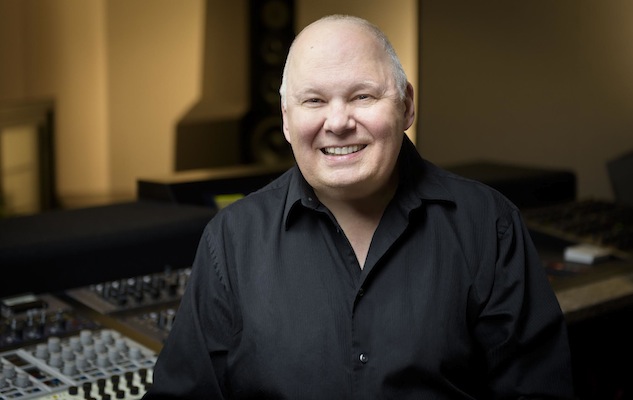
(Photo © Vincent Dixon, courtesy of Gateway Mastering.)
A few postings back, I suggested that, consciously or otherwise, Dmitri Shostakovich modeled the brief but arresting four-note musical motto that begins the Passacaglia theme of the third movement of his violin concerto on Beethoven’s famous four-note beginning of the first movement of his Fifth Symphony.
In other words, instead of Beethoven’s
da-da-da DAAH…
Shostakovich opens with
DAAH, da DA-DA.
That was in the context of a Vault-Treasure Tuesday feature, David Oistrakh’s première studio recording of 1956.
I sent the link to Bob Ludwig, and Bob sent back a fascinating response. A bit about Bob, and then his important contribution to the conversation, are after the jump. Continue Reading →
Please Kickstart SACDs of David Del Tredici’s complete “Child Alice”!
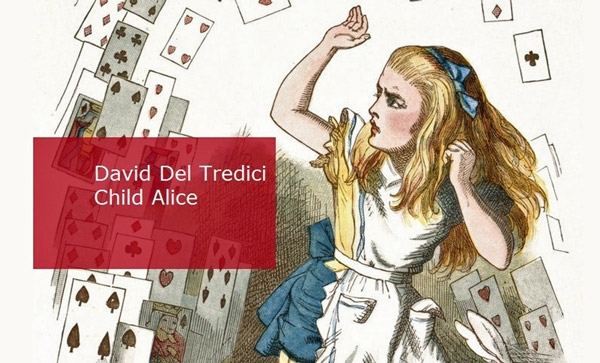
This week’s “New-Music Mondays” feature is a recording that is not yet out. It is already in the can. However, it needs an additional infusion of cabbage, moolah, or The Ready Freddy to manufacture the hybrid compatible 2-SACD set. If you missed my coverage of Tredici’s Final Alice, a work in the same series, that is here. The Kickstarter page states, “A massive 130-minute work for large orchestra and an amplified soprano soloist, Child Alice has been performed only twice in its entirety, and has never been commercially recorded.”
The ensemble is The Boston Modern Orchestra Project. Your cabbage, etc. will be in good hands! Not only is BMOP Musical America‘s 2016 Ensemble of the Year; they have successfully produced about 50 recordings, as well has completing four Kickstarter projects. (Some BMOP Kickstarter projects were not funded; but, that’s the record biz.) The project already has pledges totaling more than $10,000; about $3,500 additional is all that is needed. The higher-echelon donor rewards include autographed items.
Complete Kickstarter info is here. The project video is not embed-able here, but it presents snippets from the live recording.
Thanks to Stereophile‘s Kalman Rubinson for bringing this to my attention.
# # #
Prince Performs “Purple Rain” During Downpour: Super Bowl XLI Halftime
I watched this live, and I was at the time convinced that it was the most heroic public performance I had ever seen. In a freaking monsoon.
Well; he is with Jimi Hendrix now. And with Schubert, Mahler, Hank Williams, and Buddy Holly.
Eternal rest grant him, O Lord.
# # #
Harry Connick, Jr: “We Are In Love”
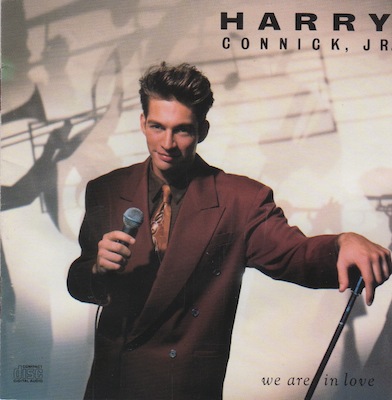
Harry Connick, Jr: We Are In Love
Recorded at Evergreen Radford Studio, North Hollywood, California in March, 1990 and RCA Studio B, New York, in April and May, 1990; released on CD and analog cassette 1990, on MiniDisc circa 1992, and on non-compatible single-layer stereo SACD (apparently from 44.1kHz PCM sources) 2000.
CD Columbia CK 46146
Harry Connick Jr., piano, vocals; Branford Marsalis, tenor and soprano saxophones; Russell Malone, guitar; Benjamin Jonah Wolfe, bass; Shannon Powell, drums; Harry Connick Jr., Marc Shaiman, George Butler, Bobby Colomby, producers; recorded and mixed by Joel Moss.
Talk about an unlikely success. In 1990, American actor, singer, pianist, and composer Harry Connick, Jr. released as anachronistic an album as anyone could imagine—male vocals, most tracks with big-band-style orchestral accompaniment. Connick wrote most of the songs, but there were also standards including “A Nightingale Sang in Berkeley Square” and Cole Porter’s “It’s Alright With Me.” We Are In Love sold two million copies in its first year, and Connick picked up the Grammy for Best Jazz Vocal Performance—Male.
Connick’s voice is of the “Boy Next Door” variety, but he makes the most of it; and the recording job is stunningly good. Thanks to the advocacy of MSB Digital’s Vince Galbo, Connick’s “A Nightingale Sang in Berkeley Square” (with excellent contributions from Branford Marsalis on tenor saxophone and Benjamin Jonah Wolfe on bass, who are the only musicians on the track) has become a favorite hi-fi-show demo track. Continue Reading →
Yevgeny Sudbin: 18 Sonatas by Domenico Scarlatti (1685–1757)
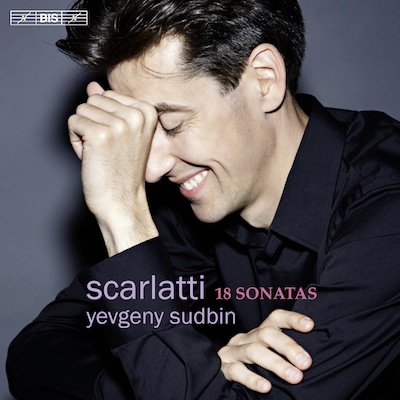
Yevgeny Sudbin: 18 Sonatas by Domenico Scarlatti (1685–1757)
Sonatas K 417 in D minor; K 208 in A major; K 159 in C major; K 56 in C minor; K 213 in D minor; K 125 in G major; K 373 in G minor; K 119 in D major; K 69 in F minor; K 425 in G major; K 29 in D major; K 99 in C minor; K 12 in G minor; K 479 in D major; K 9 in D minor; K 318 in F sharp major; K 141 in D minor; and K 32 in D minor.
AUTOGRAPHED Compatible stereo + MCH SACD/CD BIS 2138; CDQ or 24/96 download, Classics Online.
Domenico Scarlatti wrote these sonatas for his patroness Maria Magdalena Barbara, the Infanta of Portugal.
Mitzi “married up,” later becoming the Queen of Spain. (No, her nickname was not “Mitzi;” so, don’t bother writing in. But please, do find a different reason to write in!) Maria Magdalena Barbara had a nearly-insatiable appetite for… keyboard sonatas. Scarlatti wrote more than 500 of them. Furthermore, Scarlatti wrote almost all of those sonatas for the harpsichord.
Therefore, it is an historical irony, one reflected upon by Yevgeny Sudbin in his truly excellent liner notes, that today, these works are most often associated with Russian pianists; Vladimir Horowitz being the prime example. Sudbin claims that Russian musical education uses Scarlatti’s keyboard music more than does any other country’s pedagogy; and, that well may be true. Ten years ago, Sudbin made his début (all-Scarlatti), recording for Sweden’s label BIS; it received rapturous reviews. Volume Two, so to speak, is his tenth-anniversary celebration.
The bottom line is, this recording is an absolute “must-buy” for piano lovers. (Historically-Informed Performance people, perhaps not so much.) Sound samples and more, after the jump. Continue Reading →
Árstíðir: “Heyr himna smiður”
Árstíðir singing “Heyr himna smiður” in the train station of Wuppertal, Germany; September 15, 2013.
I find most “flashmob” music videos annoyingly contrived and manipulative, often bordering on the transparently insincere. The above impromptu handheld YouTube is a major exception to that rule—no fake perma-smiles, and no forced artificial interactions with passers-by.
Even better, the music is not “opera bits” being forced through a meat grinder; it’s a haunting 20th-century a-cappella tune and harmonization for a 13th-century Icelandic hymn text, “Hear, Smith of Heavens.”
While the audio quality is not the best (and the camera work would have benefited from a monopod); here, there is an organic authenticity that most flashmob music videos lack. The train station is a rather good stand-in for a cathedral. Proof again that state-of-the-art sound is sometimes the slave of jejune music, and that the slenderest knowledge of greater things means more.
The band Árstíðir’s name, in English, means “Seasons.” They deserve their five million YouTube views for this unforgettable moment. Well done, chaps!
Text, in translation, after the jump. Continue Reading →
Michael Franks: “Sleeping Gypsy”
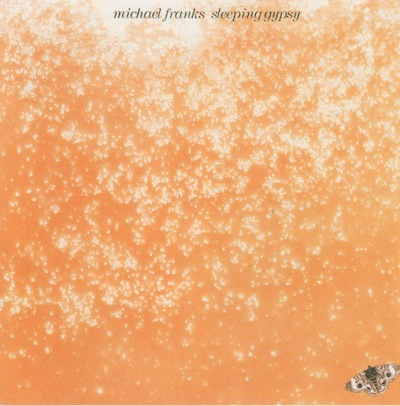
Michael Franks: Sleeping Gypsy
Recorded at Capitol Records, Hollywood, and in Rio de Janiero, Brazil, August-November 1976; released on LP 1977, CD 1990; various digital remasterings, including an SHM-CD for the Japanese Domestic Market (2012).
Michael Franks, vocals, banjo, guitar, mandolin; Joe Sample, João Donato, piano; Wilton Felder, bass; Larry Carlton, Hélio Delmiro, guitar; John Guerin, João Palma, Larry Bunker, drums; Michael Brecker, tenor saxophone; David Sanborn, alto saxophone; Ray Armando, percussion; Claus Ogerman, arranger and conductor; Tommy LiPuma, producer, Al Schmitt, engineer.
Yacht Rock? Or perhaps more like, “Jetliner to Brazil” Rock… .
If the soundworld of Joni Mitchell’s Court and Spark or that of Steely Dan’s Aja appeals to you, I think you will enjoy Michael Franks’ third studio album, Sleeping Gypsy. Sleeping Gypsy has a substantial overlap in session personnel with Court and Spark, and a partial overlap with Aja.
But over and above the sonic contributions of the finest of Los Angeles’ 1970s on-call musicians, what Sleeping Gypsy shares with its far better known contemporaries is literate and literary songwriting, and an adult perspective.
Sound samples and more after the jump. Continue Reading →
Marita Sølberg: Opera Arias

(Courtesy www.maritasolberg.com; photo credit Felix Broede.)
Marita Sølberg: Opera Arias
Opera arias by Catalani, Mozart, Gounod, Bizet, Leoncavallo, Puccini, Bellini, Rachmaninoff, Dvořák, Verdi, and R. Strauss.
Norwegian National Opera Orchestra
John Fiore, conductor
CD Simax Classics PSC1336
Say “Hello” to Marita Sølberg!
Marita Sølberg’s name was unknown to me when I stumbled upon her upcoming new release (which came out last Friday) on Naxos’ (Simax’ US distributor’s) ultra-top-secret, password-protected publicity website, which is, I am told, hosted on a server in the kitchen of an excellent barbecue place down near Chattanooga. The track list contained both old favorites and a couple of unknown arias, so I dutifully hit “Download.”
The program starts with a very well-played (Norwegian National Opera Orchestra; John Fiore, conductor), well-recorded orchestral introduction to the famous Puccini-esque aria “Ebben; Ne andro lontana” from Catalani’s obscure-except-for-one-aria opera La Wally. So far, so good.
Then, Miss Sølberg started to sing, pensively and almost languidly. Oh dear me. This one does not go into the “Discard” pile… . (More than half of the new recordings I listen to, I pass over in silence.)
Generous sound clips and more, after the jump. Clickez!
Hila Plitmann: The Acrostic Song from “Final Alice” — Steampunk Classical
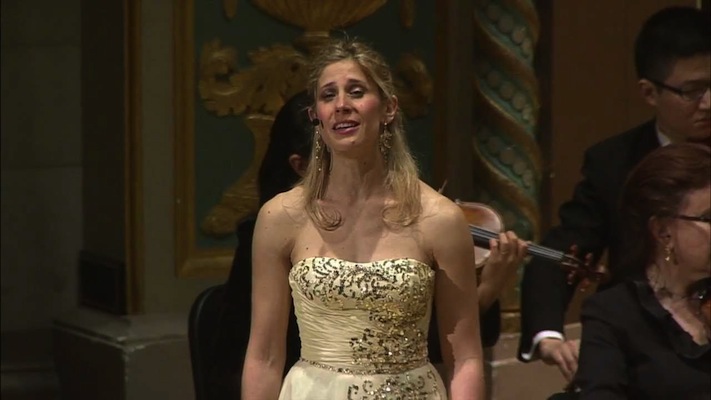
Soprano Hila Plitmann singing the final movement of David Del Tredici’s Final Alice with the Detroit Symphony, Leonard Slatkin conducting. (Note, “Del” is a given name, and not part of an Italian surname.)
Steampunk Classical.
What a concept!
In 1975-76, David Del Tredici wrote the first-ever (and perhaps only) “Steampunk” piece of classical orchestral music. (It is based upon Lewis Carroll’s Alice in Wonderland, after all.) The music is very accessible, and in general tonal and melodic, though there are episodes of dissonance and finally, chaos.
The final movement of Final Alice is the Acrostic Poem epilogue to one of the “Alice” books. The first letters of each line of the poem together spell out Alice Pleasance Liddell, the name of the girl Carroll based Alice on. Tredici instructs all the orchestral players who can, to hiss out like a steam engine the name of each of the first letters. That’s what the strange sounds you are hearing are. There’s also a rather obvious Elgar quote or homage, I think, too.
Video after the jump!


